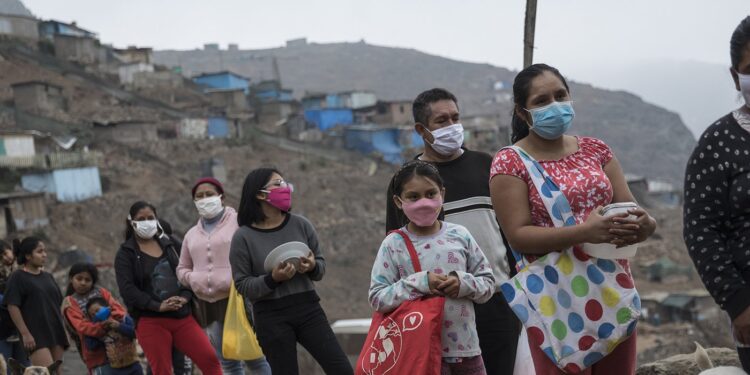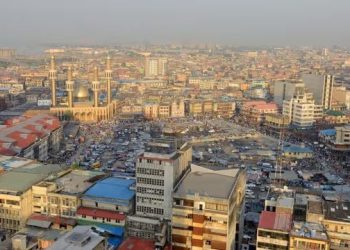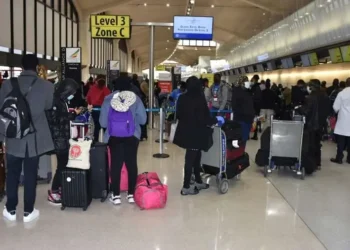Hunger and disease are becoming the order of the day in Latin America as it keeps increasing after a year of record heat, floods and drought, a report by the World Meteorological Organization (WMO) has shown.
The study discovered that the region, situated between the unusually warm Pacific and Atlantic Oceans, likely experienced tens of thousands of climate-related fatalities in 2023, along with a minimum of $21 billion (£17 billion) in economic losses and the “greatest calorific loss” compared to any other area.
Cause Of The Climate Chaos
The ongoing climate turmoil, resulting from a blend of anthropogenic global warming and the inherent El Niño phenomenon, persists as catastrophic floods ravage the southern Brazilian metropolis of Porto Alegre. These floods have claimed the lives of a minimum of 95 individuals and submerged extensive agricultural lands, following the hottest April ever recorded in human history.
Global heat records have now been broken for 11 months in a row, causing death and destruction across many parts of the planet. Latin America and the Caribbean have experienced some of the worst effects.
The World Meteorological Organization (WMO) has reported that disasters, climate change, and socioeconomic shocks are the primary factors contributing to acute food insecurity in this region. According to their summary of last year’s toll, approximately 13.8 million people have been affected.
Its Aftermath
With the rise in temperature, illnesses are expanding to cover a larger geographical area. The World Meteorological Organization (WMO) highlighted that over 3 million instances of dengue fever were documented in the initial seven months of 2023, surpassing the previous yearly record for the area. Uruguay encountered its initial cases of chikungunya, while Chile increased warnings regarding the Aedes aegypti mosquito carrier.
There were an average of 36,695 heat-related excess deaths each year in the region in the first two decades of this century. Last year’s toll has not yet been calculated, but it is likely to exceed the average given the record temperatures and prolonged heatwaves in many areas.
On 29 August, Mexico witnessed an unprecedented temperature of 51.4C, while numerous regions endured a prolonged heatwave. As the year drew to a close, a staggering 76% of Mexico faced varying degrees of drought. In October, Acapulco encountered the historic occurrence of a category 5 hurricane making landfall on the Pacific coastline. Hurricane Otis tragically claimed the lives of at least 48 individuals, causing extensive destruction to 80% of the city’s hotels and resulting in estimated damages worth $12 billion.
Other areas of Central and South America endured unusually fierce heat and prolonged drought. The Panama Canal had 41% less rainfall than normal, causing difficulties for one of the most important conduits of world trade.
Brazil, the largest nation in Latin America, faced unprecedented winter temperatures exceeding 41C and extreme droughts in the Amazon rainforest. The Rio Negro reached its lowest level in over 120 years, while fires devastated areas around Manaus. Additionally, over 100 baiji river dolphins perished in the warm, shallow, and contaminated waters of Lake Tefé.
The southern region of Brazil has experienced devastating floods on multiple occasions. In February 2023, São Paulo witnessed the loss of 65 lives due to heavy rainfall and landslides. Similarly, in September, the state of Rio Grande do Sul faced another tragic incident where 48 people lost their lives and 20,000 individuals were displaced after 300mm of rain poured down within a span of 24 hours. Presently, the same southern state is once again overwhelmed by flooding. The streets of Porto Alegre, the capital, have transformed into waterways, leading to the closure of the international airport. Additionally, the football pitch at the Arena do Grêmio now resembles a vast lake.
Last year, floods also took lives, disrupted business or ruined crops in Argentina, Chile, Uruguay, Paraguay, Peru, and Bolivia.
Climate Crisis And It’s Effect On Agriculture
The combination of drought and other factors has had a detrimental impact on agricultural output in one of the world’s most crucial food production regions. Argentina, for instance, witnessed a 30% decline in wheat production compared to the five-year average, and a similar decrease is anticipated in the harvest of this grain in the Brazilian states of Paraná and Rio Grande do Sul.
Although Brazil has managed to compensate for some of these losses through record maize production in other regions, the consequence has been an increase in food prices.
The report further highlights that Latin America as a whole has suffered significant losses in terms of calorie production.
This situation is particularly alarming in countries like Venezuela, Haiti, and certain parts of Colombia, where existing political and economic challenges exacerbate the food crisis.
The costs in human lives, lost food production and economic damage are expected to rise for as long as humans continue to burn gas, oil, coal and trees, which emit heat-trapping gases into the atmosphere.
“Sadly, this is probably only the beginning,” said Prof José Marengo, the lead author of the WMO report and director of the Brazil National Center for Monitoring and Early Warning of Natural Disasters. “Extreme events are becoming more frequent and the period of return is becoming shorter.”










